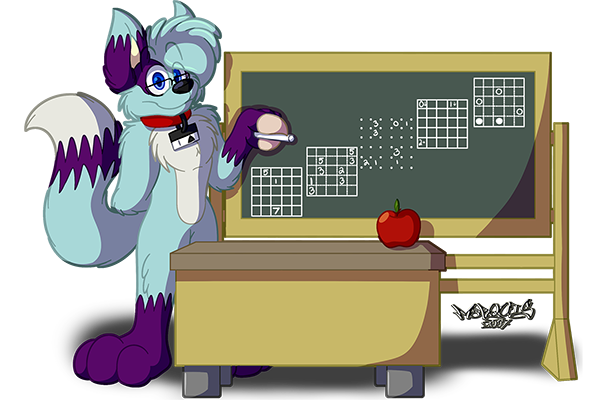This week we’re going to feature our “Best of 2017” with the top puzzles as selected by you through the FAVE button. From Monday through Saturday we’ll be highlighting roughly three puzzles per category (region division, number placement, loop, …). We’ll also be releasing details on new subscription options for our fans, replacing the patronage model we’ve used in the past.
While this is a time for a lot of annual retrospectives, this past month also marked the 5 year anniversary of GMPuzzles. My initial business plan went out on 12/12/12 at 12:12:12 and our first post here was at the end of 2012 before New Year’s Eve. For those that have been solving from the start, and for those who joined later, thanks for supporting our puzzlemakers and our community by being a patron of the site, purchasing our books, or referring friends and family to our puzzles.
I’m incredibly proud that we’ve published about 2500 puzzles in these five years, including some phenomenal classics and cool variations, and have had 0 broken puzzles (with anything other than exactly 1 solution) despite being a hand-crafted puzzle company. I stopped keeping track of how often solvers have doubted us, but I think we are at least 100-0 when someone posts that one of our puzzles has a mistake. (We have had a couple typos in our blog posts and I’ll take the blame on the rare times when the answer entry was wrong but our puzzles have never been.)
Thinking back over five years, I judge that we have been very successful in highlighting great logic puzzle design and encouraging new designers to get into puzzle construction. However, we still have more to do to build a larger audience of solvers that appreciates hand-crafted logic puzzles. Some of our efforts this year will be to have more introductory titles/weeks. In our first year, we often had focus on single classic puzzle types in posted weeks and we will get back to that a little more during this year as well as trying to have more “easy” puzzles more regularly. A longer-term project is to reorganize our website. While we have a large backlog of puzzles in each style, it is hard for a person just discovering our blog to know where/how to start. We’re thinking through some user experience improvements for new solvers reaching the site and welcome any ideas you have.
In 2018, we are also going to work on scaling our publishing. I spent a lot of 2017 turning semi-automated processes into fully automated processes, including how we generate our puzzle art and our web posts. We just finished submission guidelines for all of our puzzles and contributors will receive these soon. I’m also very happy to announce that Serkan Yürekli will be joining me as an editor for our books and other puzzles which will add to our throughput.
We have several new books in mind for 2018, including the launch of a recurring sudoku publication with a mix of Classics and Variations which will be a great title for fans of sudoku, and several more e-books highlighting genres that haven’t been in books yet like Pentominous, Nanro, and Statue Park.
On a different note, we’re going to launch a “Puzzlemasters’ Workshop” title to highlight entirely new puzzles and variations. We get a lot of unusual variations submitted here, and they are hard to post on the web as one-offs. The goal of this title is to give authors enough space to develop an idea across several puzzles. The first edition, expected around midyear, will have a new style from each of our puzzlemasters and a few guests, with 6-10 puzzles in each new style. If this works, we’ll continue this series and open it up for other submissions as a way to continue to cultivate new puzzle design even while our web puzzles start to have a greater focus on “classics”.
Thanks for solving with GMPuzzles, and here’s to a great 2018,
Thomas

